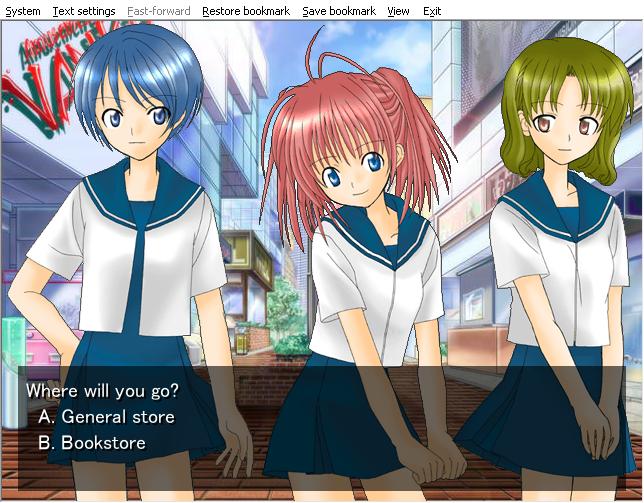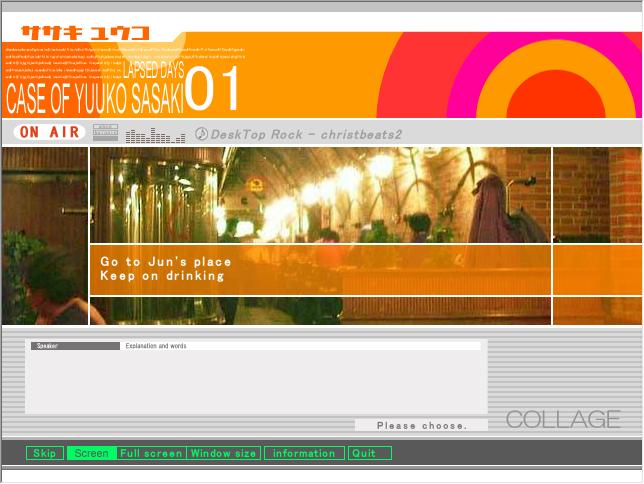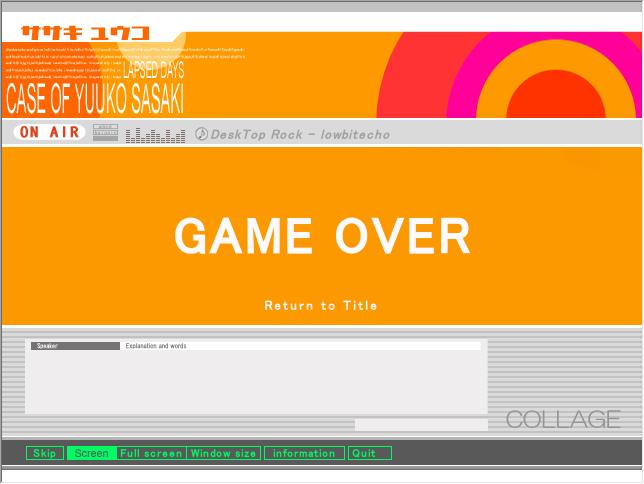I have written many visual novel reviews here at The New Leaf Journal. In so doing, I have cultivated some reusable terms to describe common visual novel characteristics. One term I have become fond of is describing a certain type of visual novel choice structure as survive and advance.
I use the term survive and advance to describe choices wherein one option ends the game and other option(s) continue the game. We are talking about high stakes choices where at least one option leads directly to a game over.
Nicholas A. Ferrell
Because I have used this description often, including in my first on-site visual novel review, and will likely have cause to use it in the future, I decided to publish an article defining the use of the term in the visual novel context.
Choices in Visual Novels
Many visual novels or sound novels (the distinction is not material for our instant purposes) have choices. Different kinds of choices are presented in visual novels.
Some choices have no impact on the ultimate course of the story but may change a scene or a small amount of dialogue.

Other novels have meaningful choices that do change the course of events in the story.

In this article, we are concerned with meaningful choices. Not all meaningful choices are the same. For example, in dating sim type novels, choices may correlate to raising or lowering the affection of one of the heroines or heroes. In other cases, choices about where to go or who to spend time with may be connected to a point system that ultimately determines the player’s route.

We are not concerned with these sorts of consequential choices here. We are thinking about more stark choices.
I use the term survive and advance to describe choices wherein one option ends the game and other option(s) continue the game. We are talking about high stakes choices where at least one option leads directly to a game over.
The Term “Survive and Advance”
I was exposed to the term survive and advance many years ago in relation to the annual NCAA college basketball tournament, colloquially known as March Madness. After a play-in round, the NCAA tournament has 64 college basketball teams working their way through the bracket. The tournament has a survive and advance structure wherein the team that wins advances to the next round and the team that loses is eliminated from the tournament. There is no second-chance loser’s bracket. The term “survive and advance” is apt here. Winning means surviving to play in the next round. The champion must survive to the end, winning six consecutive games to capture the National Championship. While I always associated survive and advance with March Madness, the NFL playoffs are another well-known U.S. sports example of the format.
ESPN named a documentary about Hall of Fame basketball coach Jim Valvano’s 1983 North Carolina State National Championship team Survive and Advance.
Applying “Survive and Advance” to Visual Novels
I describe a visual novel as having a “survive and advance” choice structure if the novel has more than one choice where at least one option causes a game over or bad end and at least one option advances the game forward.

See six examples of visual novels that I have reviewed (with links to each review) that have survive and advance choice structures:
- Bad End (review): Bad End is composed entirely of survive and advance choices. Every single choice in the game has one option that continues the game and one option that leads directly to a bad ending.
- Collage (review): Collage, like Bad End, presents only survive and advance choices. Every single choice in the game either leads to a game over or advances the story.
- Flood of Tears (review): The first half of Flood of Tears offers the player choices on which of the two heroines to spend time with. These choices ultimately determine which route the player ends up on. After triggering one of the two routes, the novel switches to a survive and advance structure, with almost all of the heroine route choices being of that species. (Some choices in the common route become survive and advance once the player is leaning toward one of the girl’s routes.)
- Night of the Forget-Me-Nots (review): A horror visual novel where every choice is meaningful. Some choices change the player’s route while other choices are sudden death (often literally), giving the novel a clear survive and advance structure.
- Plain Song (review): Plain Song is a love story visual novel with three choices. The first choice does not change the story, but the last two choices have one “correct” option and one option that leads directly to a game over.
- Return to Shironagasu Island (review): A Return to Shironagasu Island has a mix of meaningless choices and survive and advance choices where the wrong choice leads to the death of one of the main characters, and by extension a game over. It also has some survive and advance point and click sequences.

There are some novels with a single survive and advance-style choice. One great example is Shooting Star Hill (review). After offering several choices that do not materially affect the story (only dialogue), it presents one meaningful choice close to the end of the novel where there is one correct answer that leads to the true end and one wrong answer that leads to the bad end. However, while this is a survive and advance-style choice, I do not consider this a survive and advance choice structure. I borrowed the term from March Madness, which puts college basketball teams through a sudden death gauntlet of six games. In order for a visual novel to have a survive and advance structure, it must have more than one sudden death choice.
Shooting Star Hill’s final choice is very similar to Plain Song’s. However, Shooting Star Hill does not have a survive and advance structure because it only has one such choice. Plain Song has a tenuous claim to a survive and advance structure because it has two such choices, meeting my definition’s minimum threshold.
Conclusion
Having used the term survive and advance to describe choices in many visual novels, I thought that it was worth defining my use of the term clearly so I can refer back to this definition in the future. While March Madness and visual novels do not have much in common on the surface, a popular term from the NCAA basketball tournament proves to apply naturally to a certain, relatively common, visual novel choice structure.
